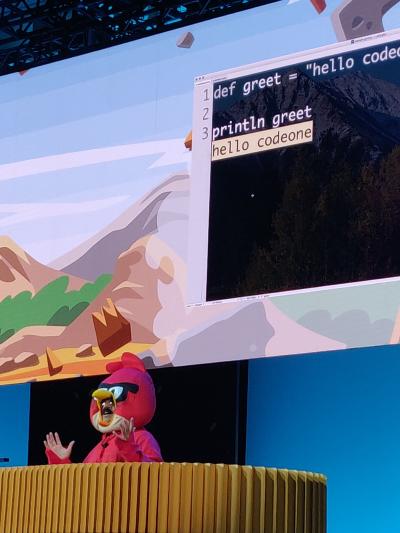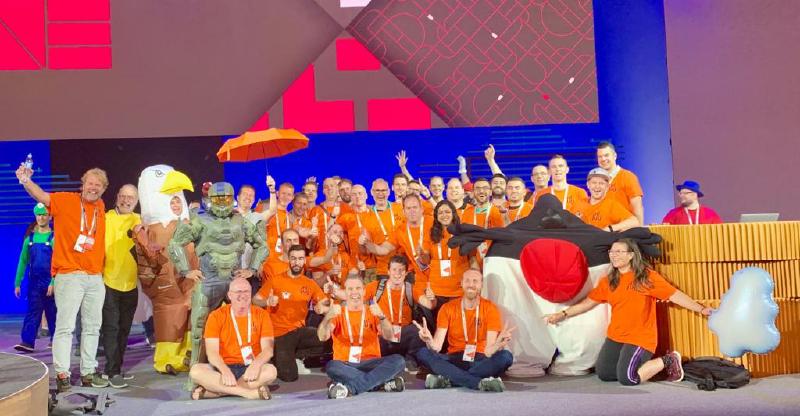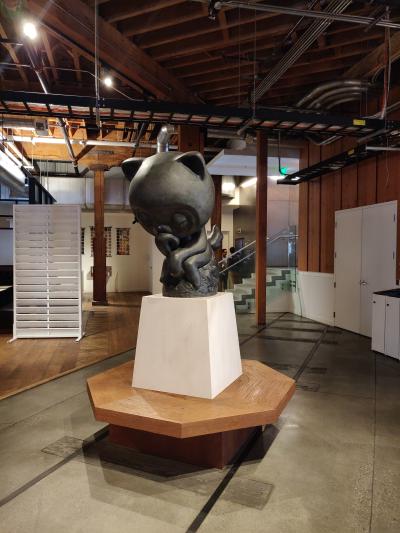
Code One - Day Three
Third day on Code One already! Highlights for today: the Community Keynote, a trip to GitHub and a session called “Sarcasm as a Service”.
Community Keynote
This years Community Keynote was dedicated to classic games. It was the traditional fun collection of sketches with many well-known and famous personalities in the Java community.



Also a tradition, the Dutch delegation of NLJUG members all dressed up in orange T-shirts. After the session we all runned up to the stage for our annual group picture.

Trip to GitHub HQ
The NLJUG organised a short trip to the GitHub headquarters a few blocks from Moscone. We all walked there (one long orange string of people) and had a nice tour of the office.


Sarcasm as a Service
At the end of the day I attended a session that discussed a few basics of machine learning and artificial intelligence. After a short intro of the field, Rory Preddy dove into text analysis, and more specifically sentiment analysis. One of his demos with ML.Net showed machine learning - machine learning: a command-line interface that tries to find a machine learning approach that fits the problem space. I have to say I’m a bit sceptical about that - how can a program know the answers that I’m looking for from my data set? The demo wasn’t so detailed that it showed exactly how that worked.
Using a small dataset with a few very sarcastic texts, Rory showed that it currently wasn’t really capable of detecting the sarcasm in it. Even though it was very clear for the audience that those texts meant something else that it suggested. Its actually a hard problem, and even the American government didn’t really know how to do that - illustrated by a recent tender.
But in fact we often tell our emoji’s when we tweet, by adding emotions at the end of a tweet. This gives a good opportunity to detect sarcasm: if the sentiment analysis on the text gives another outcome than the emoji’s. This project, ran by MIT is called DeepMoji and you can try it online.
comments powered by Disqus